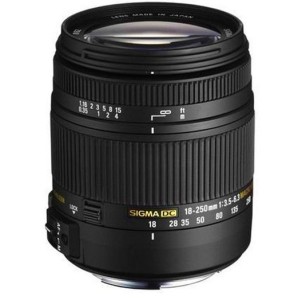If you already take photos when you travel, creating short video clips is an easy way to earn more money from the same trip without a lot of extra work.
You need a camera that has a video feature… and you need a tripod (a microphone is recommended, too). But if you don’t have these things, Tom Reissmann recommends shooting with your Smartphone or iPad for now.
I, personally, don’t like filming with an iPad or phone. You can’t blur the backgrounds as well as you can with a camera. And I like the flexibility of being able to change my lens.
That said, it’s a great place to start if you don’t have a budget for something more.
See here for what I’ve said in the past about the new mirrorless cameras. They’re really great for video.
I carry the Olympus E-M5 body with two lenses: The Lumix 14-140 f5.6 when I’m traveling and the Leica 25mm f/1.4 when I’m at home taking pictures indoors or outdoors with the kids.
Tom has some other, cheaper recommendations below.
If you’re starting from scratch and you want a good camera anyway, the new mirrorless cameras are a great place to start. And while this Olympus body and these two lenses are fairly steep in price, there are other, cheaper models if you shop around.
When you’re ready to invest in something bigger, buy something with HD recording capabilities – an SLR camera or a standard video camera that shoots in HD.
See Tom’s recommendations below…
Lori Allen
Director, Great Escape Publishing
How to Buy a Camera that Shoots Video: 2015 Equipment Guide
By videographer, Tom Reissmann
Here is a list of video equipment products you will need to get started as a travel videographer:
1. Tripod with fluid pan-head
With a video tripod it is very important to have a fluid pan-head in order to create smooth and slow pans, so your existing photo tripod will not work for panning. Even some of the video tripods on offer can be too stiff, as you will read in the reviews, like this one for example.
I would therefore recommend this one, it is inexpensive and of great quality.
I am using this one myself with my smaller camera, though it will also work for a larger one, like the 5D. If you prefer to just change the pan-head on your existing tripod then go for this one. Although you are only saving a few dollars as compared to a new tripod so you might as well get a new one, which of course will work for standard photography as well.
2. External Microphone
If you are planning on doing interviews, for testimonials and company presentations for example, then you should get an external microphone, since your internal microphone does not produce good quality audio. Here is one I would recommend.

You will need a larger memory card for video than for photography, since video files require much more storage space. The minimum size should therefore be 16GB and ideally 32GB or even 64GB. Also you will need a class 10 SD card, since video only works with fast writing speeds, given that you have to capture much more information than with a photo. I would therefore recommend the following SD Cards, this one with 32GB and this one with 64GB.

Another thing that you will notice when you start using video on your camera is that it will eat up much more battery power than shooting photos. Thus you should take some spare batteries with you and always make sure you have charged them before you go out. You don’t have to buy the brand names, like Canon and Nikon, the generic ones will be just fine. Your camera might say that there is a communication problem and would you like to continue and you should just press ‘OK’. Depending on your camera you can get generic batteries by typing in your camera name and spare batteries on Amazon. Here is a list of batteries for Canon.
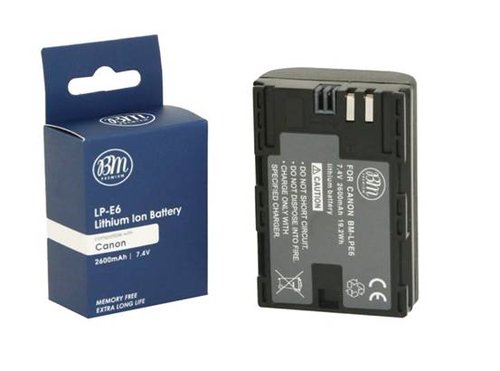
Mirrorless cameras are a new type of camera that are a hybrid of the inexpensive digital cameras and DSLR cameras. They have interchangeable lenses like a DSLR camera but don’t have the optical viewfinder and are smaller and lighter than DSLRs. They also shoot great video and they have a big advantage over DSLRs when it comes to video: they focus much faster and stay in focus even when your subject moves, which makes your life much easier, especially when you are starting out. Although some of the DSLR models are catching up with this feature.
Here are my recommendations for mirrorless cameras:
Best Beginner Mirrorless Camera – $598 on Amazon
The Sony a5100 is a tiny camera and has very fast focus. It shoots Full HD video. It also has a 180-degree flip screen and you can send photos and videos right to your Smartphone via internal Wi-Fi, for sharing on social networks.
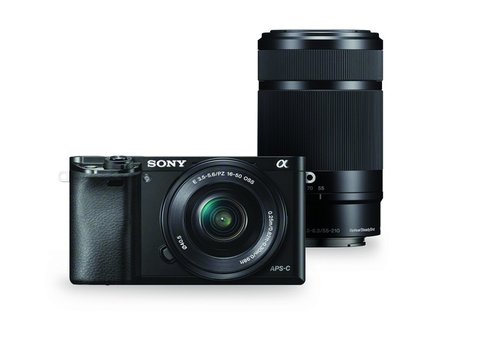
The Samsung NX30 is the closest you will get to the image quality of a DSLR camera but in a much smaller body. This camera performs really well even in low light conditions and produces crystal clear images. The LED works exceptionally well and allows you to shoot from practically any angle.
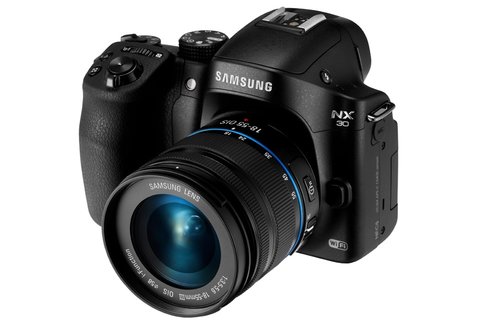
The Sony Alpha a7R is a full-frame sensor camera, for half the price of a DSLR camera. It will capture images similar in detail and depth of field to a Canon 5D in almost any light condition and it can shoot up to 60 frames per second in video mode, but in a much lighter and smaller body than a DSLR camera. The large and high-resolution viewfinder allows you to set up your shots and see what you are shooting in great detail even in sunny conditions.
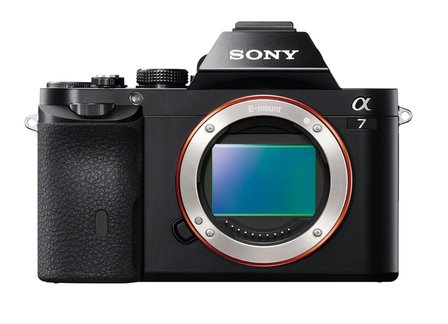
These cameras still produce the best images under most light conditions and the viewfinder can really help you to set up your shot especially in sunny conditions.
Here are my recommendations for 2015:
Best Beginners DSLR – $496 on Amazon
The Nikon D3300 offers great performance with a beginner-friendly design and price. It shoots excellent 1080p video, which can go as far 60 frames per second — capabilities that usually cost hundreds more.
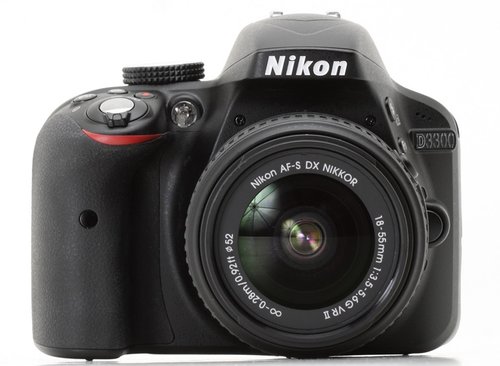
The Canon EOS Rebel T5i offers an 18-55mm STM zoom lens. “STM” stands for silent stepping motor, which means that when the camera autofocuses as you’re recording a video, the camera microphone won’t pick up the noise of the lens moving. This is very important if you’re capturing a quiet scene.
Another standout feature of the T5i is the light sensitivity of up to ISO 25,600 for shooting in very low light. Video recording is up to 1080p HD at 30 fps with stereo sound from built-in microphones. There are manual audio adjustments and a jack to connect an external microphone.
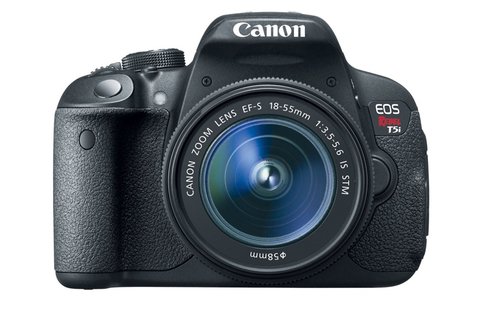
The Canon EOS 70D has a CMOS imaging chip with “dual-pixel” focus technology to speed up autofocus when shooting in live view mode (framing images on the LCD). In addition, a 19-point autofocus system in regular shooting mode and an ISO light sensitivity range of up to ISO 25,600 make the 70D a versatile shooter for almost any situation, day or night.
When shooting video, the dual-pixel sensors lock focus on the subject you designate, keeping it sharp regardless of where it moves. This is the first DSLR autofocus technology that works exceptionally well and will make your life much easier. A flip-out, tilting 3-inch LCD touch screen lets you compose still and video at a variety of odd angles, and an LCD readout on the top lets you quickly check and adjust your settings.
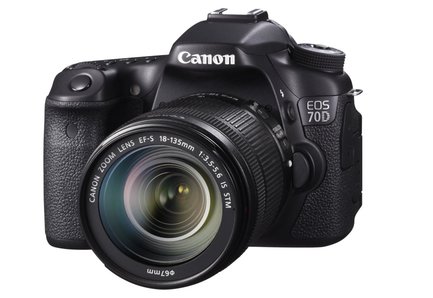
Here is what you should consider when buying a lens:
- Focal length – defines the lens’s angle of view
- Aperture – describes how much light the lens gathers
- Image Stabilization – some lenses include optical stabilization units to counteract the blurring effects of hand shake
- Format – describes the sensor size the lens is designed to work with.
- Lens mount – determines whether the lens will physically fit your camera
We’ll look into each of these in more detail below.
Here are my recommendations for lenses that will allow you to get even better shots:
Wide Angle lens:
The wide-angle zoom extends the angle of view, allowing you to capture broad sweeping vistas. It’s therefore a popular choice for landscapes, architecture, and interior shots.
Typical wide angle lenses are 10-24mm F3.5-5.6 or 12-24mm F4. They will let you fit more in the frame.
My recommendations is the Sigma 10-20mm F4-5.6. You will just have to choose the right one for you camera brand and makes sure it fits the lens mount of your camera.
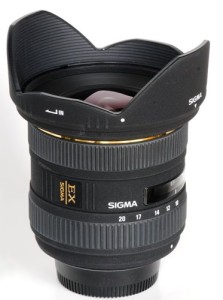
This is often the second lens that photographers buy, the telephoto zoom effectively allows you to get closer to your subject, and is therefore useful for photographing such things as sports, wildlife, or children running around playing.
A typical telephoto lens would be 55-200mm F4.5-5.6 or 75-300mm F4-5.6. My recommendation would be the Nikon 55-200mm or the Canon 55-250mm or Sigma 55-200mm for all camera brands.
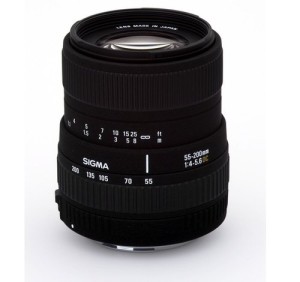
Also known as Superzooms, these lenses are all-in-one lenses which cover a full range of focal lengths from a moderate wide-angle to long telephoto. They combine in one package the range of the kit zoom that came with the camera, plus that of a telephoto zoom, and therefore make perfect general purpose travel lenses. The technical image quality is often not quite as good as two separate lenses, but for many users this is more than made up for by the convenience.
My recommendation is the Tamron 18-270mm F3.5-6.3 or the Sigma 18-250mm, which will give you a wide range of focal lengths from wide-angle to telephoto.
Travel Photography Resources
5 Dos and 2 Don’ts for Travel Photography
Take Great Photos And Get Paid More For Your Travel Articles
Turning a Photography Hobby into a Monthly Income
The Pros Of Selling Your Images As Stock Photography
16 Mobile Photography Tips And Tricks Every Photographer Should Know




